Episodes
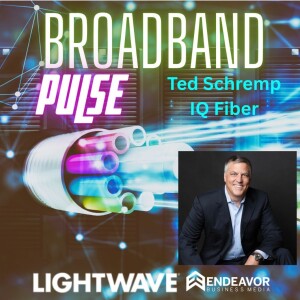
4 days ago
4 days ago
In the latest episode of the Broadband Pulse podcast, we talked to Ted Schremp, president and CEO of IQ Fiber.
Ted was an early pioneer in developing services like telephony for the cable industry during his time at Charter Communications. He’s now carrying on that innovative spirit to drive fiber broadband growth at IQ Fiber.
In May, IQ Fiber launched Businesses in Jacksonville, Gainesville, Florida, and Savannah, Georgia, that can take advantage of the competitive carrier’s fiber-based services. Let’s start by talking about how that has gone so far.
About the Podcast In the Lightwave Broadband Pulse podcast, we address the key issues affecting the optical and broadband industry segments. Join us every week for insights from industry leaders on these topics. Visit our website at www.lightwave.com and click on our podcast site at www.broadbandpulse.podbean.com.
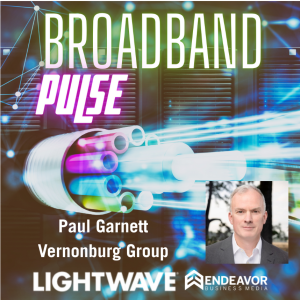
7 days ago
7 days ago
In this latest Broadband Pulse podcast, we talked to Paul Garnett, the founder and CEO of the Vernonburg group.
Vernonburg recently issued a new white paper showing that broadband funding achieves more than twice the impact when invested in adoption-focused programs rather than network overbuilds in already-served areas.
The new report, Avoiding the Overbuild Trap: Adoption, Not Overbuilding, Drives Connectivity and Digital Opportunity, challenges the practice of using public funds to subsidize new broadband networks in areas where high-speed service is already available. The three authors of the report—Paul Garnett, Breese McIlvaine, and Alexander Jeffery—urged policymakers to develop and implement comprehensive digital opportunity programs that address what they argue are the real drivers of the digital divide.
Leveraging Vernonburg Group’s Digital Opportunity Map and other sources, the report discusses publicly available data on broadband availability and adoption -- with specific community examples -- and details principles that should guide broadband funding programs.
Here’s a timeline of the interview:
Opening | 0.00
Host introduces the guest | 0:06
Vernonburg’s new broadband white paper | 0:39
Public vs. privately funded broadband networks | 4:10
Public/Private (P3s) broadband partnerships | 6:07
Technology choice | 7:48
Driving broadband adoption | 11:07
The role of digital navigators | 14:48
Final thoughts | 16:37
Outro | 19:00About the Podcast In the Lightwave+BTR Broadband Pulse podcast, we address the key issues affecting the optical and broadband industry segments. Join us every week for insights from industry leaders on these topics. Visit our website at www.lightwave.com and click on our podcast site at www.broadbandpulse.podbean.com.
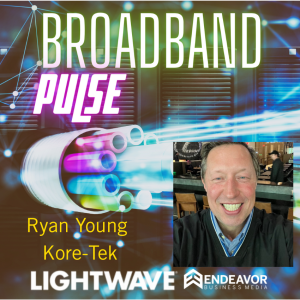
Wednesday Jun 25, 2025
Wednesday Jun 25, 2025
In this new Broadband Pulse podcast, we talked to Ryan Young, CEO of Kore-Tek, an optical systems integrator, about how it is shifting its focus to serving service providers directly.
Here’s a timeline of what we addressed during the podcast:
Host introduces guests 0:03
Kore-Tek’s 2025 priorities 0:32
How Kore-Tek is engaging directly with service providers 4:00
Middle mile opportunity 6:35
IP over DWDM 8:50
Benefits of conducting network assessments 11:53
Addressing the labor crisis 15:55
Final Thoughts/closing 19:30
About the Podcast In the Lightwave+BTR Broadband Pulse podcast, we address the key issues affecting the optical and broadband industry segments. Join us every week for insights from industry leaders on these topics. Visit our website at www.lightwave.com and click on our podcast site at www.broadbandpulse.podbean.com.
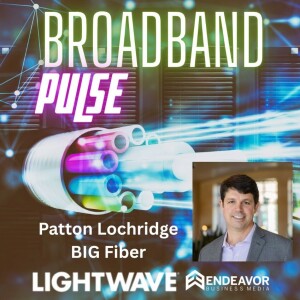
Monday Jun 23, 2025
Monday Jun 23, 2025
Bandwidth IG recently changed its name to BIG Fiber. The dark provider stated that the name change reflects its growing momentum in providing dark fibrer solutions to meet the demands of AI and cloud computing.
Since officially launching in 2019, BIG Fiber has rapidly expanded its presence in key data center hubs, including the San Francisco Bay Area and the Greater Atlanta area. The company later entered the Greater Portland market. Further, BIG Fiber has also grown existing markets by significantly expanding in the San Francisco Bay Area and launching a project in Greater Atlanta earlier this year that will more than double its network
Lightwave recently caught up with Patton Lochridge, Chief Commercial Officer for BIG Fiber.
During the podcast, we addressed the following topics:
Rebranding as BIG Fiber
The dark fiber opportunity for data centers
How the dark fiber market is shaping up in 2025
Key data center markets
New network expansions
Dark fiber differentiation
About the Podcast In the Lightwave+BTR Broadband Pulse podcast, we address the key issues affecting the optical and broadband industry segments. Join us every week for insights from industry leaders on these topics. Visit our website at www.lightwave.com and click on our podcast site at www.broadbandpulse.podbean.com.
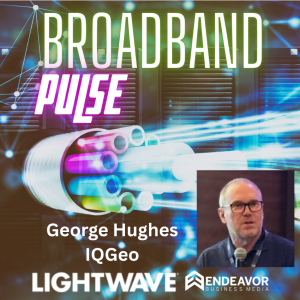
Wednesday Jun 18, 2025
Wednesday Jun 18, 2025
George Hughes, who recently took on the role of head of value consulting at IQGeo, is no stranger to implementing IT systems in large companies.
Before coming to IQGeo from 3-GIS, he spent three decades at Verizon. During his tenure at Verizon, he led teams that focused on systems development and project management across telco’s wireline and wireless business units. More recently, he held roles driving Verizon’s ongoing development of AI architecture and strategy.
During an interview with Hughes at the Fiber Connect 2025 show in Nashville, Broadband Pulse spoke with Hughes about his new role and company developments.
Here’s a timeline of the interview:
Opening | 0.00
Host introduction of guests | 0:24
Transition from Verizon to IQGeo | 0:57
Defining value consulting focus| 2:26
IQGeo’s autonomous network management | 3:00
Utility pole attachment reforms influence on broadband deployment | 7:14
Impressions of FiberConnect 2025 | 8:25
Final thoughts/closing | 9:45
About the Podcast In the Lightwave+BTR Broadband Pulse podcast, we address the key issues affecting the optical and broadband industry segments. Join us every week for insights from industry leaders on these topics. Visit our website at www.lightwave.com and click on our podcast site at www.broadbandpulse.podbean.com.
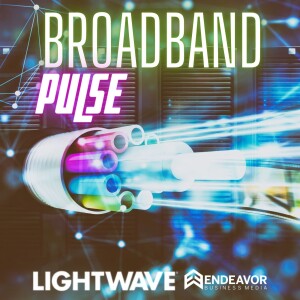
Monday Jun 16, 2025
Monday Jun 16, 2025
In this latest issue of Building Broadband, we’re tracking new broadband deployments from several regional and national broadband players, including:
Comcast begins building out broadband in new Indiana communities
Elberton, Georgia, takes up the 25G fiber opportunity
Fidium begins fiber expansion in Van Buren, Maine
GoNetspeed connects Wells and Ogunquit, Maine, to its fiber network
IdeaTek has joined the State of Kansas to build the Freestate Middle Mile Network
Intrepid Fiber Networks begins open access network build in Frederick, Colorado
Spectrum expands broadband to rural Jefferson County, Wisconsin
TDS breaks ground on Monroe County, Tennessee, fiber project
About the Podcast In Lightwave's Broadband Pulse podcast, we address the key issues affecting the optical and broadband industry segments. Join us every week for insights from industry leaders on these topics. Visit our website at www.lightwave.com and click on our podcast site at broadbandpulse.podbean.com/.
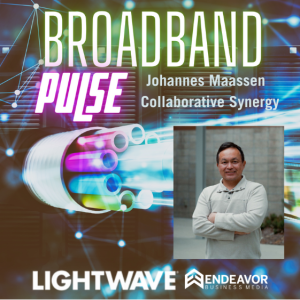
Thursday Jun 12, 2025
Thursday Jun 12, 2025
As more service providers look to expand their fiber reach into new markets, leveraging existing utility pole infrastructure is key. To do that, service providers must navigate the process of making new attachments, such as fiber optic lines, which require utility poles.
Because this process involves ensuring the pole is structurally sound, has adequate space for the new attachments, and meets safety standards, it often requires existing attachments to be moved or the pole itself to be modified, making it a daunting process for providers.
However, companies like Collaborative Strategy are looking to simplify this process.
In this new Broadband Pulse Podcast, conducted during the recent Fiber Connect tradeshow in Nashville, we spoke with Johannes Maassen, founder and president of Collaborative Synergy.
Collaborative Synergy is a telecom and utility infrastructure field engineering firm known for precision fieldwork, complex permitting solutions, and make-ready engineering.
During the podcast, we addressed the following issues:
Fiber Connect 2025 show observations
Collaborative Synergy’s make-ready approach
Helping providers and communities
Regional differences
Automating the make-ready processes
The role of pole loading software—O-Calc and SPIDACalc to IKE PoleForeman
One Touch Make Ready’s (OTMR) emergence
Final thoughts
About the Podcast In the Lightwave Broadband Pulse podcast, we address the key issues affecting the optical and broadband industry segments. Join us every week for insights from industry leaders on these topics. Visit our website at www.lightwave.com and click on our podcast site at broadbandpulse.podbean.com/.
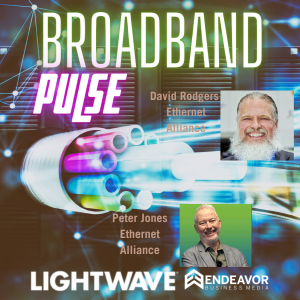
Monday Jun 09, 2025
Monday Jun 09, 2025
In this podcast, we talked to two Ethernet Alliance leaders during this year’s OFC 2025 show:
David Rodgers, Ethernet Alliance Events & Conferences Committee Chair, and Technical Business Development Manager for EXFO
Peter Jones, Distinguished Engineer@Cisco, Chair@Ethernet Alliance
About the Podcast In the Lightwave Broadband Pulse podcast, we address the key issues affecting the optical and broadband industry segments. Join us every week for insights from industry leaders on these topics. Visit our website at www.lightwave.com and click on our podcast site at broadbandpulse.podbean.com/.
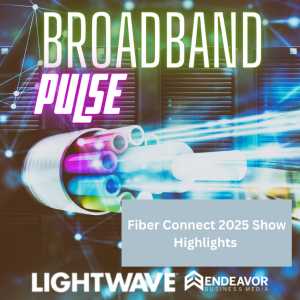
Wednesday Jun 04, 2025
Wednesday Jun 04, 2025
In Lightwave’s day three daily podcast for Fiber Connect 2025, we're breaking down the key announcements, presentations, and conversations at the Nashville show.
Some of the highlights of the day included:
Frontier Communications’ Scott Mispagel Receives 2025 Connect the Unconnected Award
FBA’s state broadband summit
T-Mobile brings its Fiber Home Internet service
Fiber Broadband Association previewed its ThoughtWaves Documentary
Lightera’s new InvisiLight Home Fiber Kit
About the Podcast In the Lightwave Broadband Pulse podcast, we address the key issues affecting the optical and broadband industry segments. Join us every week for insights from industry leaders on these topics. Visit our website at www.lightwave.com and click on our podcast site at broadbandpulse.podbean.com/.

Tuesday Jun 03, 2025
Tuesday Jun 03, 2025
In Lightwave’s day two podcast for Fiber Connect 2025, we're breaking down the key announcements, presentations, and conversations at the Nashville show.
Some of the highlights of the day included:
Economic Impact Underscores Importance of NTIA BEAD Program
Nokia's co-existence solution for 10G, 25G, and 50G PON
The marriage of fiber and AI
Enhancing middle mile networks
Ting emphasizes community-centric approach to delivering broadband
About the Podcast In the Lightwave Broadband Pulse podcast, we address the key issues affecting the optical and broadband industry segments. Join us every week for insights from industry leaders on these topics. Visit our website at www.lightwave.com and click on our podcast site at broadbandpulse.podbean.com/.







